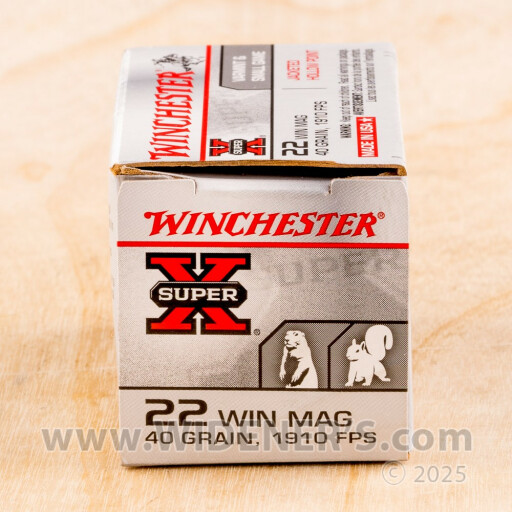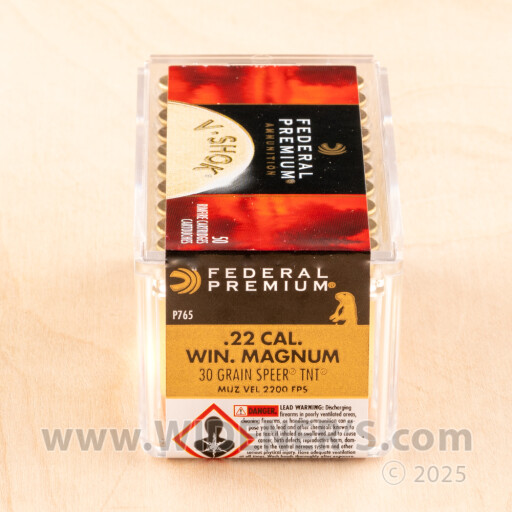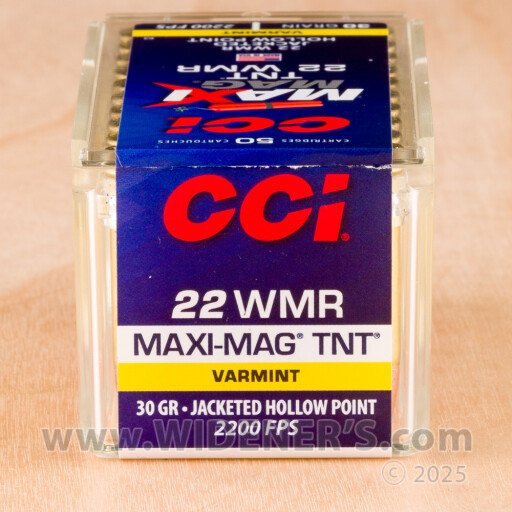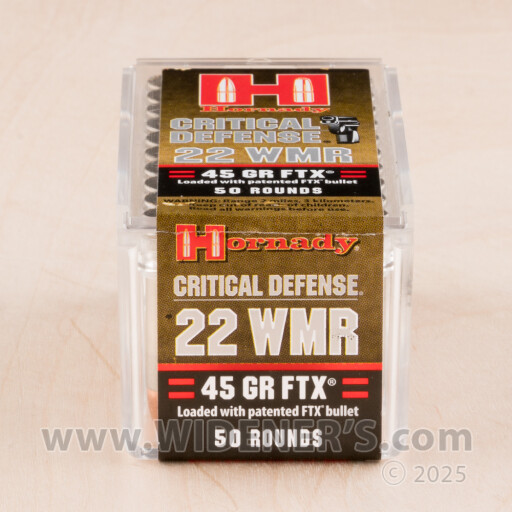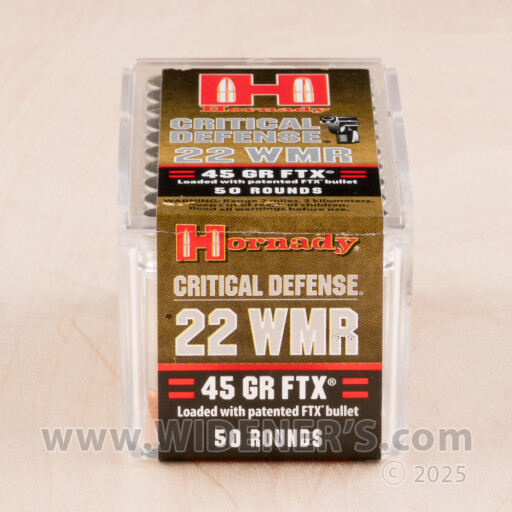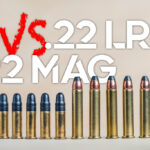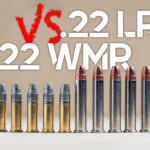
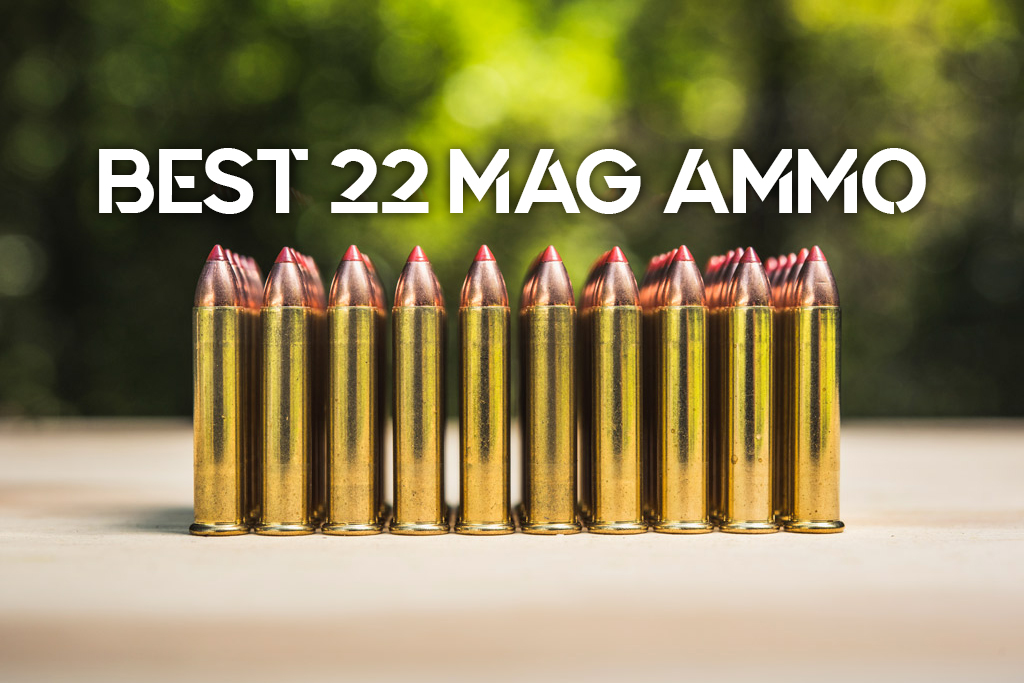
The .22 LR is undoubtedly the most common caliber in the world. It leaves something to be desired in terms of effectiveness on anything beyond small game. There is, however, a distinction between efficient lethality with rimfire ammunition. That’s where the .22 magnum cartridge comes in. When it comes to the best 22 MAG ammo, what do those options look like?
If you need a rimfire option with an extra kick for dispatching varmints, you’ve got several possibilities. The .22 Winchester Magnum Rimfire (WMR) was designed for just this purpose. Providing a hard-hitting .22 using a standard weight .22 bullet, with impressive results. If you’re ok with diminishing ballistic returns, you can use it in a handgun as well.
Best 22 MAG Ammo
Now, let’s take a closer look at some of our favorite .22 MAG ammo options. We’ve included a wallet-friendly FMJ option, an HP round, and a polymer tip for varmint control.
Full Metal Jacket (FMJ)
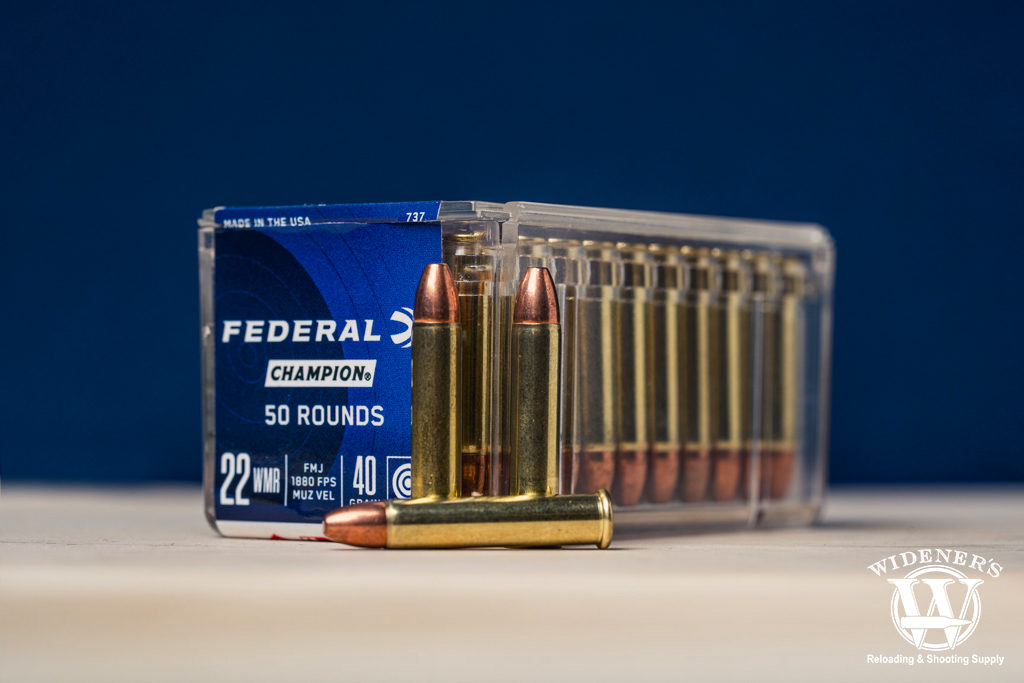
Federal Champion .22 Magnum ammo is designed for plinking, targets, competition, and training.
The Federal .22 Magnum rounds are full metal jacket, 40-grain projectiles that have a muzzle velocity of 1880 and a muzzle energy of 314 foot-pounds. They are cost-effective, reliable, and useful for a wide range of rimfire applications.
These cartridges have brass casings, which offer better reliability than cheaper casing materials. They are available in 50-count boxes as well as larger cases. If you’re going to the range to plink, or sight in an optic, these are your best option.
| Caliber | Bullet Type | Bullet Weight | Velocity (Muzzle) | Energy (Muzzle) | 50 Yards (Velocity/Energy) | 100 Yards (Velocity/Energy) | 150 Yards (Velocity/Energy) |
|---|---|---|---|---|---|---|---|
| .22 WMR | FMJ | 40gr | 1,880 FPS | 314 FT LBS | 1,570 FPS/219 FT LBS | 1,311 FPS/153 FT LBS | 1,121 FPS/112 FT LBS |
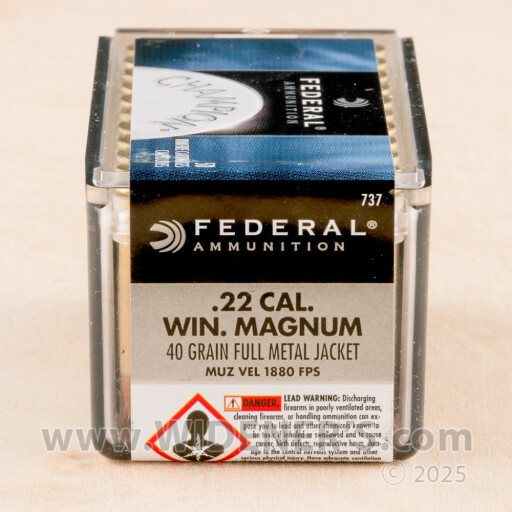
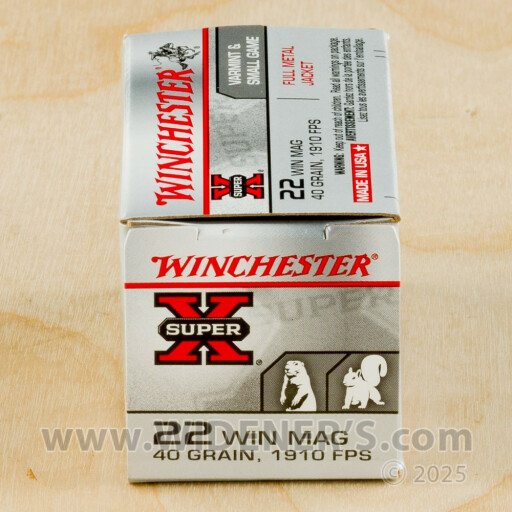
Jacketed Hollow Point (JHP)
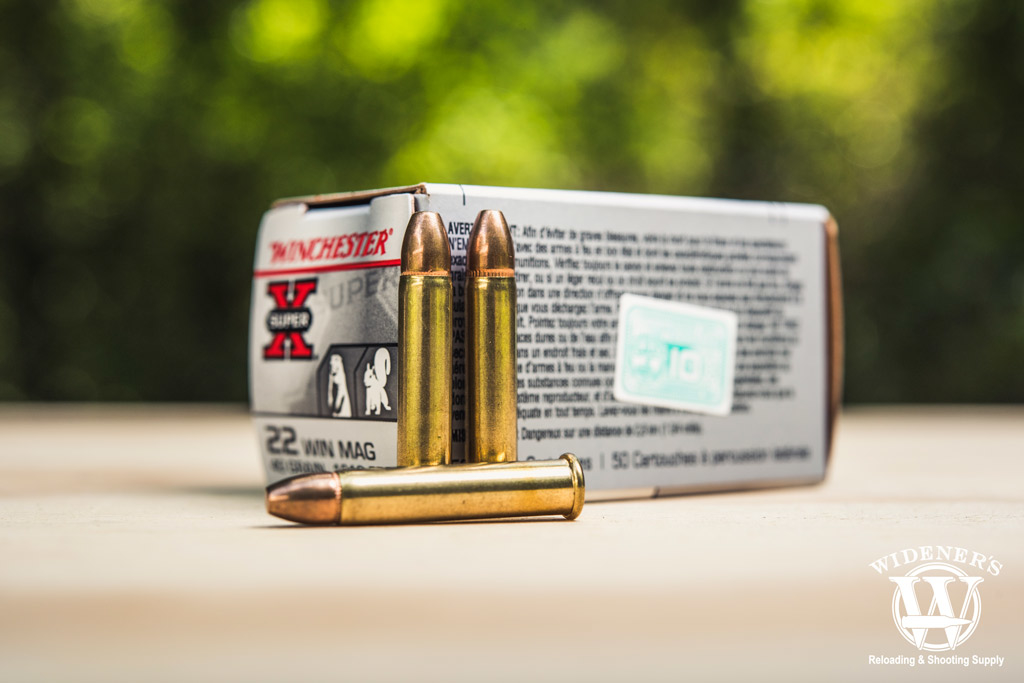
Winchester’s JHP Super-X bullets are designed to deliver maximum damage to the target.
Unlike the .22 LR, JHP really means something in the WMR. With the ballistics of this cartridge, it will do some very real damage. 22 WMR JHP ammo ranges anywhere between 28- to 40 grains and produces a broad spectrum of velocities. Ranging from blistering-fast to stupid-fast.
Winchester 28-grain JHP is lead-free. It screams along at 2,200 fps. Whereas, 40gr JHPs are around the 1,900 fps range. None of those numbers is the least bit shabby when you consider it is coming from a relatively small rimfire cartridge.
| Caliber | Bullet Type | Bullet Weight | Velocity (Muzzle) | Energy (Muzzle) | 50 Yards (Velocity/Energy) | 100 Yards (Velocity/Energy) | 150 Yards (Velocity/Energy) |
|---|---|---|---|---|---|---|---|
| .22 WMR | JHP | 40gr | 1,910 FPS | 324 FT LBS | 1,592 FPS/225 FT LBS | 1,326 FPS/156 FT LBS | 1,130 FPS/113 FT LBS |
Hornady V-Max®
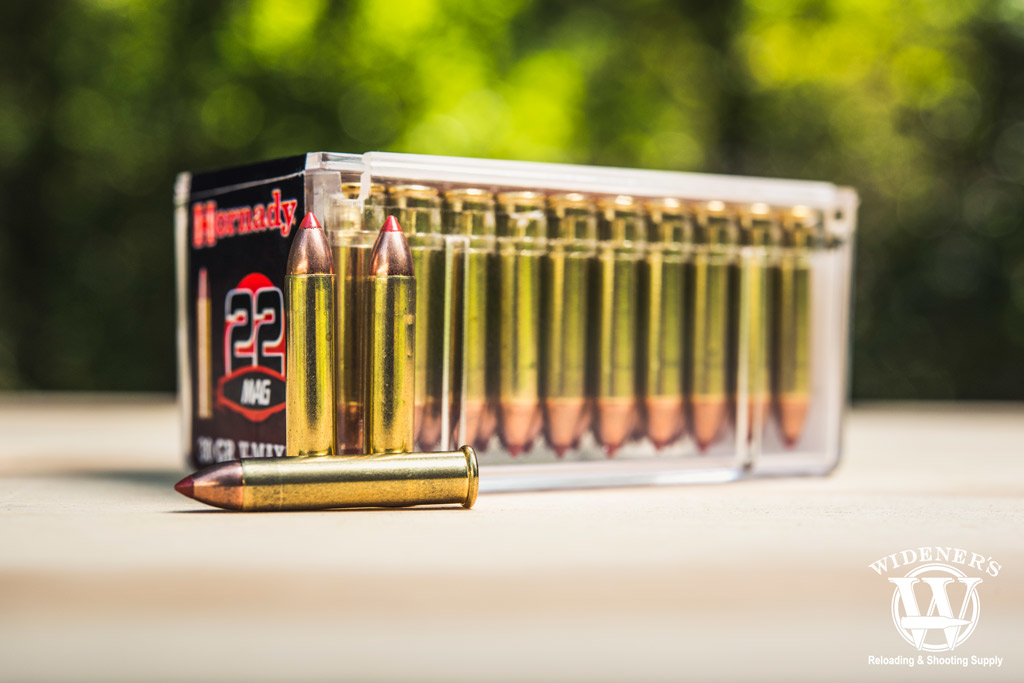
Hornady V-Max ammo is revered in the hunting community for its lethal accuracy at 100 yards.
The Hornady V-Max® has been a mainstay of hunters and sportsmen for a number of years now. Their .22 caliber bullet is no exception. Designed for a 100-yard zero, the .22 WMR V-Max® posts 2,200 ft/s velocity and 322 ft. lbs. at the muzzle. Downrange you can expect a little over 1,400 ft/s and around 130 ft. lbs. at 100 yards with no drop. Ideally used at ranges of around 100 yards or less. The 30-grain V-Max® drops down to 1,002 ft/s. Only retaining 67 ft. lbs. of energy at 200 yards while dropping over 16”.
It’s not the most ideal out of the hot rimfire calibers at ranges over 100 yards. It is fair to state that most users wishing to apply the .22 WMR are already aware of this and intend a centerfire caliber for longer shots. The .22 WMR offers a lot of low-cost rifles. The ammunition is still considerably cheaper than a comparable centerfire V-Max® cartridge. They show to be exceptionally lethal at 100 yards and nearer.
| Caliber | Bullet Type | Bullet Weight | Velocity (Muzzle) | Energy (Muzzle) | 50 Yards (Velocity/Energy) | 100 Yards (Velocity/Energy) | 150 Yards (Velocity/Energy) |
|---|---|---|---|---|---|---|---|
| .22 WMR | Poly | 30gr | 2,200 FPS | 322 FT LBS | 1,885 FPS/237 FT LBS | 1,421 FPS/134 FT LBS | 1,226 FPS/100 FT LBS |
 CCI Maxi-Mag 22 WMR 40 Grain TMJ - 2000 Rounds
$569.85
Shop Now
CCI Maxi-Mag 22 WMR 40 Grain TMJ - 2000 Rounds
$569.85
Shop Now
 CCI 22 Magnum 30 Grain V-MAX - 50 Rounds
$18.85
Shop Now
CCI 22 Magnum 30 Grain V-MAX - 50 Rounds
$18.85
Shop Now
 Hornady 22 WMR 30 Grain V-MAX Polymer Tip Ammo - 500 Rounds
$164.85
Shop Now
Hornady 22 WMR 30 Grain V-MAX Polymer Tip Ammo - 500 Rounds
$164.85
Shop Now
 Winchester Varmint 22 WMR 30 Grain V-Max - 50 Rounds
$21.85
Shop Now
Winchester Varmint 22 WMR 30 Grain V-Max - 50 Rounds
$21.85
Shop Now
 CCI Maxi-Mag 22 WMR 40 Grain JHP – 500 Rounds
$154.85
Shop Now
CCI Maxi-Mag 22 WMR 40 Grain JHP – 500 Rounds
$154.85
Shop Now


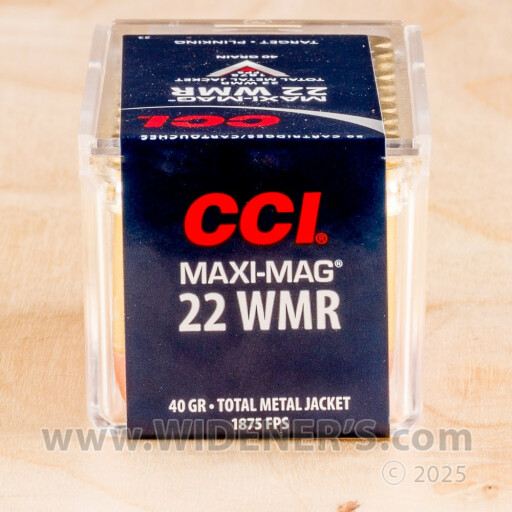
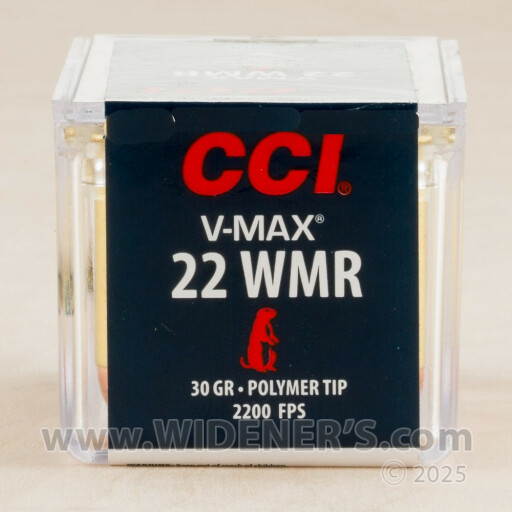
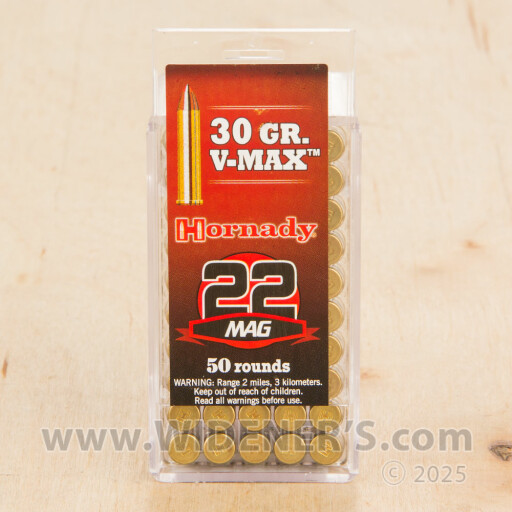
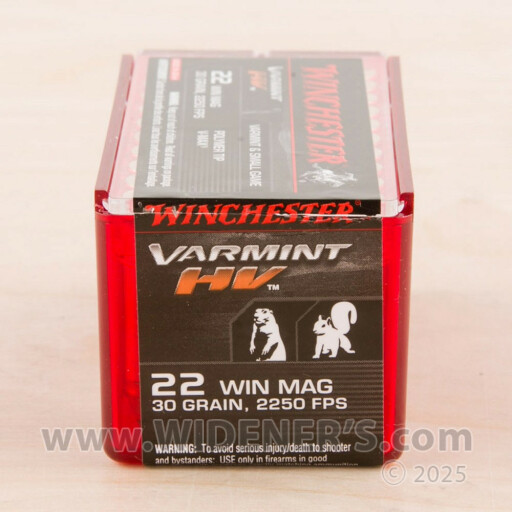
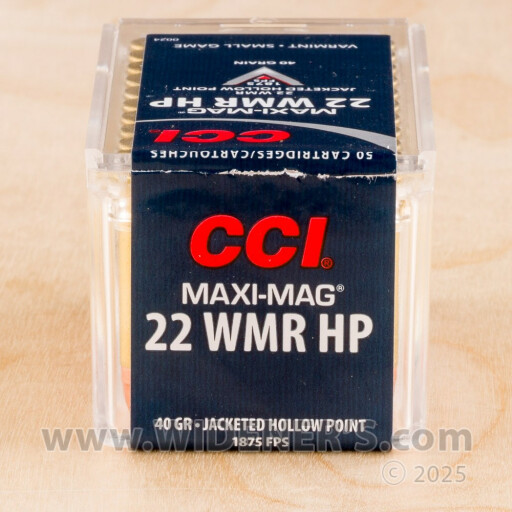
Hornady FTX®
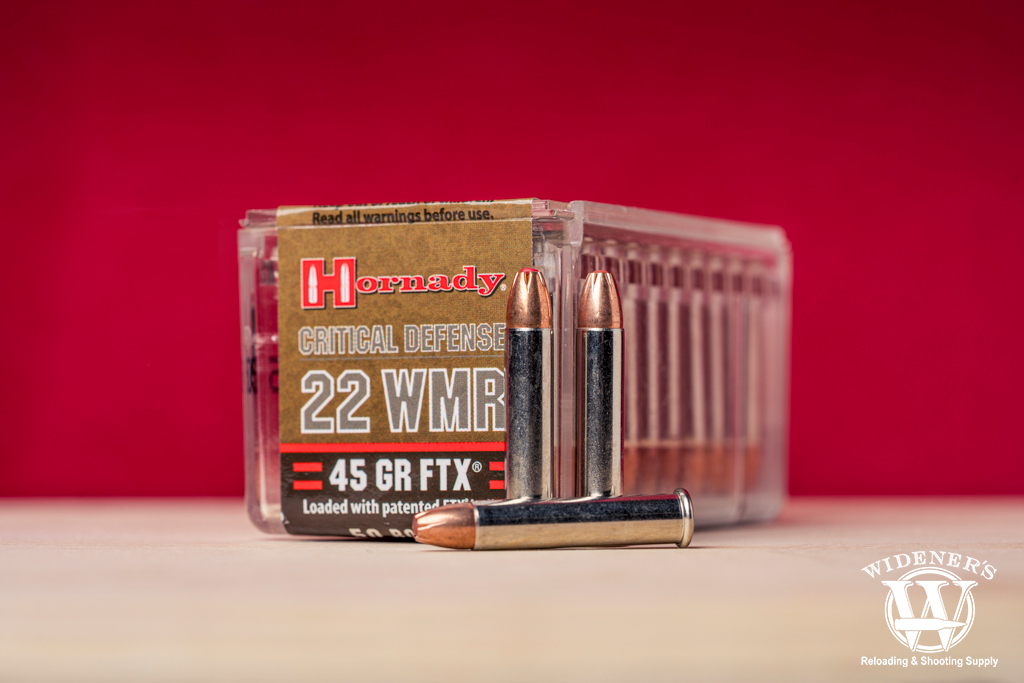
The Hornady FTX 45gr bullet is a thumper, designed for handgun use, it makes an interesting self-defense option.
Despite its diminutive caliber, the .22 WMR enjoys a decent presence in the self-defense market. When you see muzzle energy as high as it is, you can understand why it has a place in this market. Especially, when you consider a firearm like the Kel-Tec PMR-30. Giving the shooter a 30+1 capacity in a medium-frame, lightweight autoloader with very little recoil. Or, the deep-concealing mini-revolvers in the North American Arms lineup.
Hornady FTX® is available in .22 WMR as a 45gr bullet which shows 1,000 ft/s and 100 ft. Lbs of energy at the muzzle of a handgun, since it is a handgun-designed cartridge. These numbers are not bad when you take into consideration the intended application.
| Caliber | Bullet Type | Bullet Weight | Velocity (Muzzle) | Energy (Muzzle) | 50 Yards (Velocity/Energy) | 100 Yards (Velocity/Energy) | 150 Yards (Velocity/Energy) |
|---|---|---|---|---|---|---|---|
| .22 WMR | FTX | 45gr | 1,000 FPS | 100 FT LBS | 926 FPS/86 FT LBS | 868 FPS/75 FT LBS | 678 FPS/46 FT LBS |
Bullet Types & Uses
The interesting thing about the WMR is it uses a similar bullet as the .22 LR but produces radically different results. Depending on your needs, there’s a good amount of bullet-type options. However, some bullet options do not exist in the rimfire caliber market.
Full Metal Jacket (FMJ) & Total Metal Jacket (TMJ)
These are the bread and butter of .22 WMR cartridges. Made for a variety of utility shooting, they fire flat and produce good ballistics. In essence, they make a good all-around load suitable for dispatching soda cans and varmints alike. They also are the cheapest loads available, which is a powerful factor in shooting anything.
There is one significant caveat to this, which needs to be said here. Do not expect to pay .22 LR prices for .22 WMR ammo because you won’t. You will spend closer to the price point of cheap .223 ammo.
Jacketed Hollow Points (JHP) & Polymer-Tipped
These are your hunting and in some cases, self-defense rounds. So what is the point of choosing the .22 WMR instead of a centerfire? Well, it is a great in-between and is readily available. Unlike a lot of the other in-between calibers (.22 Hornet, etc.). Sometimes you don’t need the thump of a .223 (or larger), but need more than .22 LR.
Another pro feature of the WMR is the commonality between platforms. While not quite as prolific as the .22 LR, there are still a number of different handguns and rifles chambered in WMR. Sufficed to say a handgun in .22 WMR is far more potent for self-defense than one in .22 LR.
History Of The .22 WMR
The .22 LR was well into its much-storied tenure when the .22 WMR was dreamt up. Initially released in 1959, .22 WMR features a larger case, based on the older .22 WRF design. Allowing for velocities that make for a more potent rimfire round.
And potent they are! A .22 WMR carries 50% more energy at 100 yards than a comparable .22 LR has at the muzzle. Yes, that is correct.
The WMR came about because varminters, landowners, and sportsmen wanted a lot more oomph than the .22 LR could ever dream of while retaining the low cost and light recoil of a rimfire.
22 Mag Quick Answer Box:
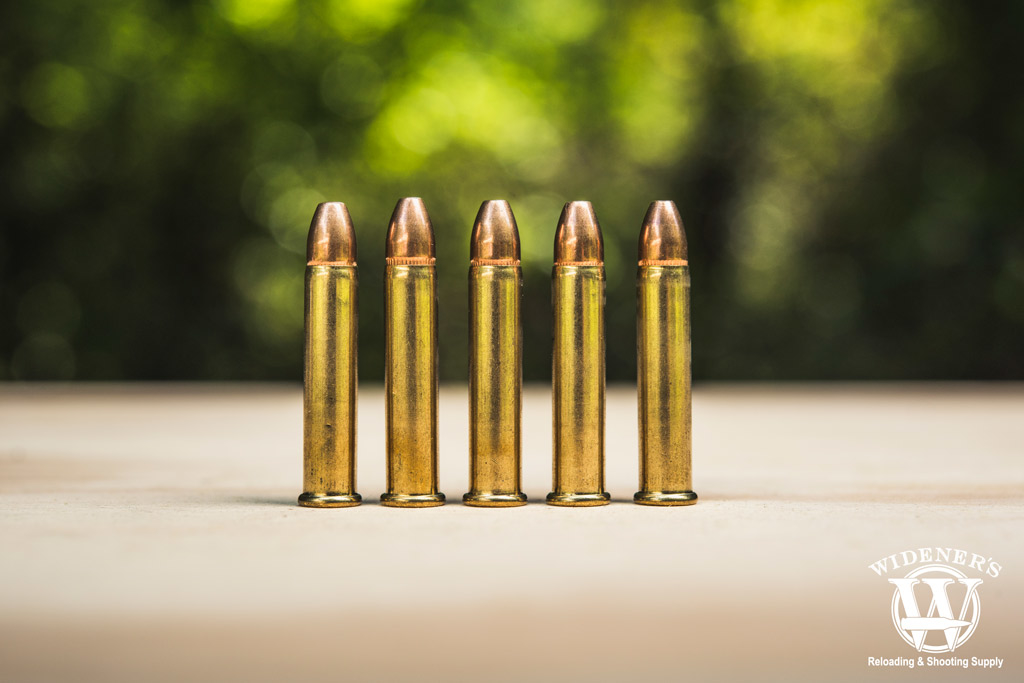
Are you looking for rimfire with a kick? Give the mighty .22 Magnum cartridge a chance.
Is 22 WMR the same as 22 Mag?
Yes, .22 WMR ammo is the same as .22 Mag ammo. Why does it have 2 different names? In a word, it comes down to marketing. Winchester introduced the cartridge in 1959 as the Winchester Magnum Rimfire (WMR), but the common abbreviated name for the round is the .22 Mag.
What’s the difference between 22 Mag and 22 Hornet?
The .22 Hornet cartridge is a descendant of the .22 WCF cartridge, which was developed in the 1920s at Springfield Armory. 22 Hornet bullet is larger in size and weight than the .22 Mag cartridge. The .22 Hornet has advantages in both velocity and energy over the .22 Mag cartridge.
Can you deer hunt with 22 Mag ammo?
The .22 Mag cartridge is not a recommended cartridge for deer hunting, it may be mighty, but it lacks the mass of rifle caliber ammo. In many states, it is illegal to hunt large game with an underpowered cartridge. The .22 Mag cartridge is intended for hunting game 20 Lbs. or less.
What is .22 WMR Ammo used for?
Before there was an explosion of high-performance centerfire calibers based on the .22 caliber platform, the .22 LR reigned supreme in all sorts of varmint control. However, all shooters understood that it was not adequate for the larger varmints and smaller predators of the world, namely the coyote.
Winchester set out to upsize the .22 LR by using a common bullet but lengthening the case to create a magnum rimfire caliber. The end result was the still popular .22 WMR caliber, which offers much better terminal ballistics for use on small and medium-sized predators.
The .22 WMR takes a common .22 40gr bullet and almost doubles the velocity and energy, creating a simple rimfire which can easily and cleanly dispatch common varmints and at longer ranges.
Best 22 MAG Ammo: Good Investment?
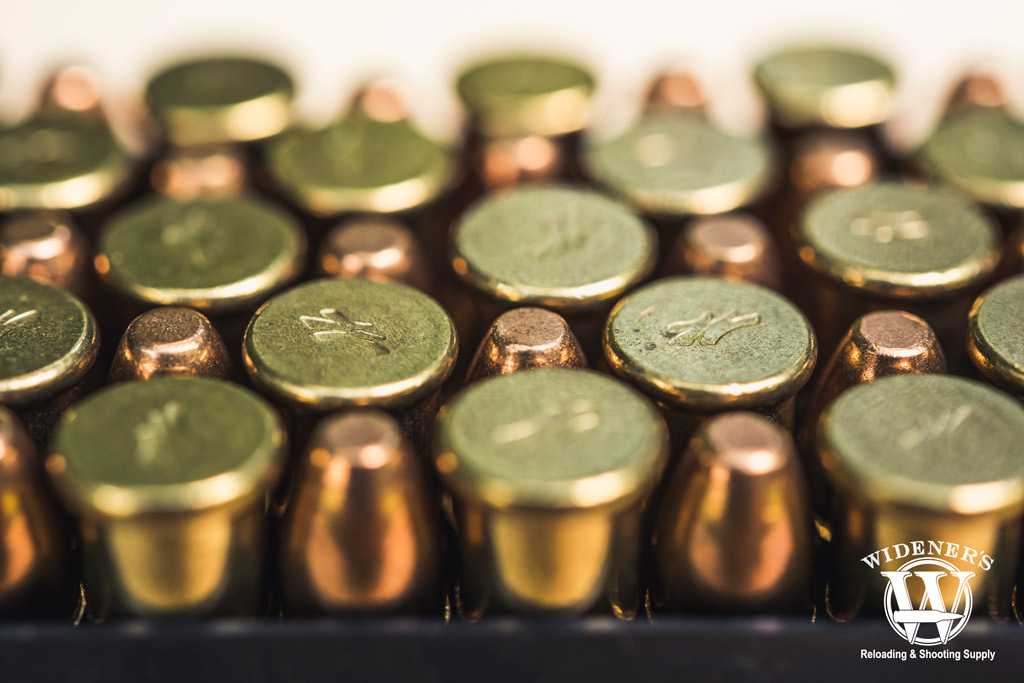
The .22 WMR cartridge is an interesting lightweight alternative to the .223 centerfire cartridge.
When you consider the .22 WMR you have to understand its limitations. It is not, nor will it ever be in the league of the .22 centerfire calibers. It was never the manufacturer’s intention for this bullet to compete directly with them. What it is, is a great caliber to bridge the gap between the .22 LR and the smaller centerfire .22s. For instance, the .22 Hornet and .223 Remington.
Its use is for a bunch of different purposes. It is considerably lower in cost in terms of firearms and ammunition than centerfire cartridges. If your shooting doesn’t require as much reach or punch as the common .223 Remington, maybe take a look at the .22 WMR. It might just surprise you at what it has to offer.


